
Milano Roma
Market Report H2 2023
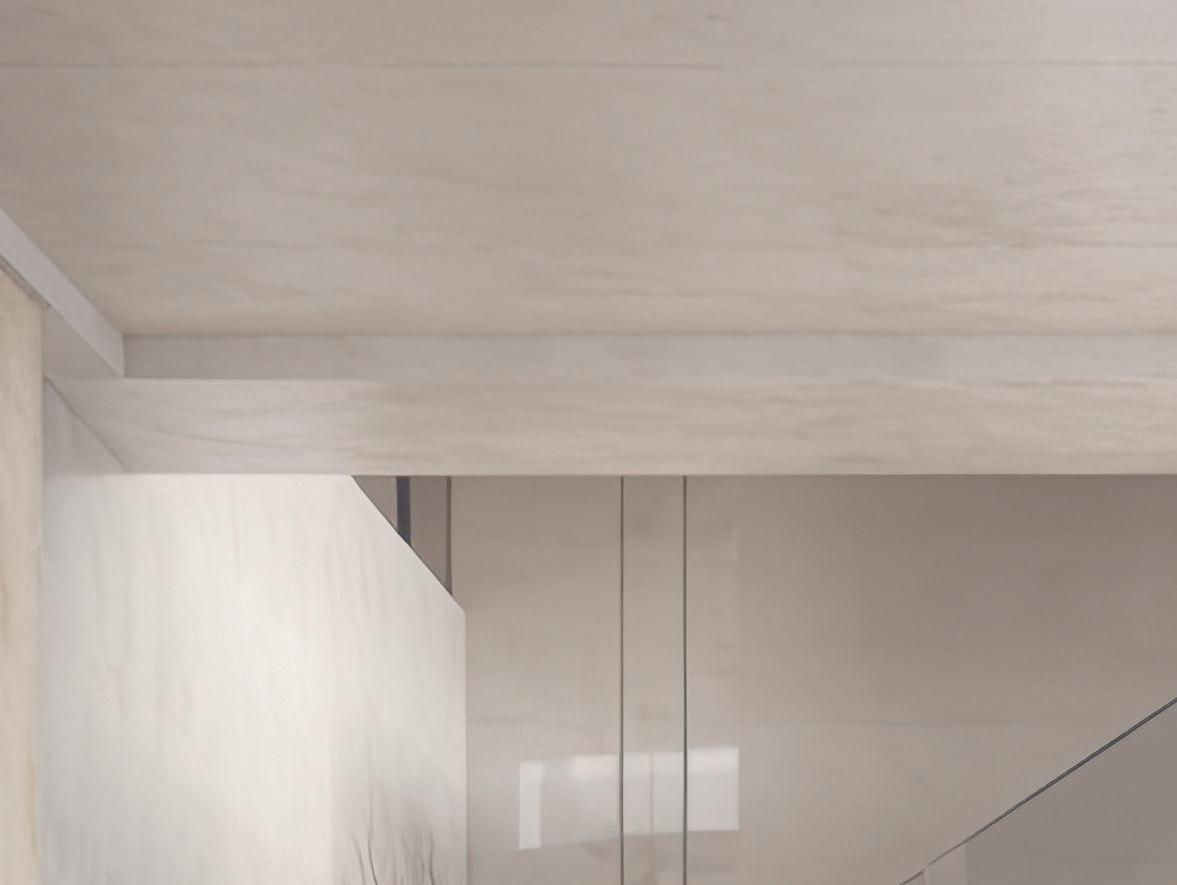







3 Market Report Milano Roma H2 2023 04 08 19 30 05 17 28 31
ECONOMIA ITALIANA
MERCATO RESIDENZIALE DI PREGIO A MILANO
MERCATO RESIDENZIALE DI PREGIO A ROMA
MERCATO DI MILANO E ROMA IN SINTESI
CONGIUNTURA IMMOBILIARE IN ITALIA
PUNTO SU MILANO
PUNTO SU ROMA ENGLISH VERSION MARKET REPORT MILANO ROMA H2 2023 |
Prodotto da Engel & Völkers. Realizzato col contributo scientifico di Nomisma.
IL
IL
IL
LA
IL
IL

58.919.157
Scenario economico e prospettive
L’economia italiana è rimasta stabile nel terzo trimestre del 2023 dopo il calo registrato nel secondo trimestre dell’anno. Anche la dinamica tendenziale risulta stabile, interrompendo una crescita che durava da dieci trimestri consecutivi. La crescita acquisita del Pil si stabilizza pertanto allo 0,7%.
Nel contesto di rallentamento generale dell'economia globale, e in particolare dell’Europa, l’economia italiana dovrebbe crescere del +0,7% anche nel 2024, risentendo dell'indebolimento del settore industriale e del calo degli investimenti nell'edilizia.
I conflitti in Ucraina e Israele, le politiche monetarie restrit-
tive delle banche centrali e gli eventi climatici estremi sono tra i fattori che contribuiscono al rallentamento della crescita globale in atto.
Secondo il consensus dei principali previsori istituzionali, le aspettative per l’Italia dovrebbero migliorare leggermente nel biennio 2025-2026, con una crescita del PIL intorno all’1% annuo.
L’inflazione sta rallentando grazie alla dinamica dei prezzi di alcune tipologie di servizi e degli alimentari lavorati. Secondo l’Istat, l’inflazione acquisita per il 2023 è pari a +5,7% per l’indice generale e a 5,1% per la componente di fondo.
4
Fonte: Istat e Nomisma
Popolazione (31/10/2023)
PIL 2023 var. % annua +5,7% Inflazione 2023 -11,8% Compravendite res. Q3 YTD 23 +0,3
Prezzi medi correnti 2023 H2 Economia italiana -3 0 3 6 9 12 15 11 10 09 08 07 06 05 04 03 02 01 12 11 10 09 08 07 06 05 04 03 02 01 12 11 10 09 08 07 06 05 04 03 02 01 12 11 2021 2022 2023 Inflazione al consumo e contributi
Fonte: elaborazioni su Banca d’Italia su dati Eurostat % Indice armonizzato dei prezzi al consumo
fondo
volatile MARKET REPORT MILANO ROMA H2 2023 |
+0,7%
%
delle sue parti
Componente di
Componente
Il clima di fiducia
La fase di rallentamento dell’economia italiana negli ultimi mesi dell’anno è sottolineata anche dagli indici di fiducia di consumatori e imprese, che hanno evidenziato un peggioramento delle aspettative, tanto dei consumatori quanto delle imprese. Tra le ultime, fanno eccezione quelle di costruzioni, che mantengono un clima di fiducia particolarmente elevato. Sul fronte opposto, le imprese manifatturiere manifestano maggiore pessimismo, testimoniato da un valore dell’indice sceso al di sotto della media di lungo periodo. In tale contesto, tuttavia, si segnala che a dicembre 2023 si è verificato un aumento sia del clima di fiducia dei consumatori, salito da 103,6 a 106,7, sia del clima di fiducia delle imprese, da 103,5 a 107,2. In particolare, nelle costruzioni si stima un miglioramento di tutte le componenti.

5
Fonte:
elaborazioni su dati Istat
Consumat or i Impres e 2019 | 2020 | 2021 | 2022 | 2023 MARKET REPORT MILANO ROMA H2 2023 |
MARKET REPORT MILANO ROMA H2 2023 |
Mercato immobiliare in Italia
Le compravendite residenziali
Dopo il rallentamento registrato nella seconda metà del 2022, il volume di compravendite del settore residenziale ha subito una flessione tendenziale dell’8,3% nel primo trimestre 2023 e un calo di intensità doppia (-16%) nel trimestre successivo.
Le previsioni econometriche riguardanti la seconda metà dell’anno indicano una prosecuzione del calo delle compravendite di entità appena superiore a quanto sperimentato nel primo semestre, tanto da concludere il 2023 con 684 mila transazioni rispetto alle 784 mila del 2022, per una perdita di 100 mila compravendite corrispondente ad un tasso di variazione pari al -12,8%. La fase di contrazione del mercato avrà un’appendice anche nel biennio successivo, seppure ad un ritmo meno intenso, con cali rispettivamente pari a -8,8% e -3,6%, che riporteranno il mercato su un numero di transazioni di poco superiore alle 600 mila unità, sui livelli che si registravano nel periodo pre-Covid. Il segno positivo dovrebbe tornare solo nel 2026, con tassi di crescita modesti e di entità inferiore ai due punti percentuali.
L’andamento dei prezzi
Gli indici medi trimestrali dei prezzi, pubblicati da Banca d’Italia in gennaio 2024, evidenziano la progressiva divaricazione della forbice tra prezzi correnti e prezzi reali nel corso del 2023, imputabile alla fiammata inflativa in corso. Il calo delle compravendite dovrebbe determinare un rallentamento dei prezzi delle abitazioni nei valori correnti. La fase recessiva dell’attività transattiva si trasferirà ai prezzi immobiliari, provocando un deciso rallentamento della crescita dei valori delle abitazioni che si era registrata all’uscita della fase pandemica. Già nel secondo semestre del 2023, i prezzi delle abitazioni hanno sperimentato una frenata della crescita rispetto alla prima parte dell’anno, con la variazione congiunturale della media
A livello di singole città la situazione risulta piuttosto eterogenea, con i mercati di Padova, Napoli, Milano, Firenze e Bologna che sperimenteranno una crescita complessiva superiore ai 2 punti percentuali al termine del triennio di previsione, mentre quelli di Palermo, Bari, Cagliari e Catania subiranno un ridimensionamento dei prezzi compreso tra -1,2% e -2,5%.
Il finanziamento immobiliare
La gradualità con cui i tassi di interesse torneranno su valori più contenuti rappresenterà un freno alla ripresa delle erogazioni di mutui alle famiglie per l’acquisto di abitazioni. Di conseguenza, le nuove erogazioni, che avevano iniziato a flettere nel secondo semestre del 2022 (-7,5% la variazione tendenziale) e che hanno fatto segnare un’intensificazione
6
Fonte: elaborazioni Nomisma su dati Banca d’Italia 350 450 550 650 750 850 '2026 '2025 '2024 '2023 '2022 '2021 '2020 '2019 '2018 '2017 '2016 '2015 '2014 '2013 '2012 '2011 '2010 '2009 '2008 '2007 '2006 '2005 '2004 Compravendite residenziali in Italia e previsioni 2023-2026
2016 | 2017 | 2018 | 2019 | 2020 | 2021 | 2022 | 23
Fonte: elaborazioni Nomisma su dati Agenzia delle Entrate Correnti
Migliaia
Prezzi
Prezzi reali
dei 13 maggiori mercati pari a +0,3% contro il +1,0% del primo semestre. Di entità analoga risulteranno i tassi di crescita nel triennio di previsione, con lievi variazioni nell’ordine di mezzo punto percentuale annuo (+0,6% nel 2024, +0,5% nel 2025 e +0,6% nel 2026).
Fonte: elaborazioni su dati Agenzia delle Entrate; previsioni Nomisma per gli anni 2024-2026
del calo nella prima metà del 2023 (-32%), hanno fatto registrare una contrazione di pari entità nella seconda parte dell’anno, tanto da stimare per l’intero 2023 un tasso di variazione negativa pari a -31%. I tassi di interesse di riferimento e, conseguentemente, quelli dei mutui dovrebbero iniziare a flettere nel corso del 2024 con gradualità, mantenendosi su valori medio-elevati che ostacoleranno la domanda di credito.
Le erogazioni di nuovi mutui continueranno pertanto a contrarsi nel biennio 2024 (-17%) e 2025 (-7%). Secondo le previsioni di Nomisma, occorrerà attendere il 2026 per rivedere i primi segni positivi, peraltro di modesta entità (+2%).
consuntivo previsioni Milioni € 2015 2016 2017 2018 2019 2020 2021 2222 2023 2024 2025 2026

7
Fonte: previsioni Nomisma a luglio 2023 Nomisma 0 2 4 6 8 10 12 14 16 18
Fonte:
Erogazione di mutui alle famiglie per l’acquisto di abitazioni (dati trimestrali; milioni di EUR)
Fonte: elaborazioni su dati Banca d’Italia per dati consuntivi; previsioni Nomisma
MARKET REPORT MILANO ROMA H2 2023 |
Erogazione di mutui alle famiglie per l’acquisto di abitazioni (dati trimestrali; milioni di EUR)
Il mercato residenziale di pregio a Milano
1.370.050
Popolazione (31/10/2023)
-16,8%
Compravendite res. Q3 YTD 23
Fonte: Istat, Agenzia delle Entrate e Engel & Völkers
Congiuntura e Outlook
6,9K-11,7K
Nuovo/ristrutturato, prezzo €/mq
Nei primi tre trimestri del 2023 il mercato residenziale di Milano ha scontato una rilevante battuta d’arresto, con solo 17.811 compravendite rispetto alle 21.415 dello stesso periodo del 2022 (-16,8%). La congiuntura negativa riguarda nel complesso tutti i capoluoghi italiani, che hanno registrato un calo medio del -12,7%. Nel capoluogo lombardo un’anticipazione della tendenza al ribasso si ritrova a partire dal quarto trimestre del 2022, anno record per Milano, che con 28.600 compravendite ha superato del 6% e del 9% i risultati già eclatanti del 2021 e 2019 rispettivamente.
Nel mercato nel complesso, la frenata delle compravendite ha influito sull’andamento delle quotazioni degli immobili nuovi e usati, che nel secondo semestre 2023 hanno mostrato una crescita ancora generalizzata ma di intensità molto ridotta rispetto al semestre precedente. Sul mercato di pregio, la contrazione delle compravendite ha avuto impatti minimi o nulli sul livello dei prezzi nella maggior parte delle zone, a causa della forte rigidità dell’offerta. E tuttavia, definitivamente terminata la spinta post pandemia del mercato, si assiste ad un graduale riallineamento di domanda e offerta. Sul segmento di
290-420
Nuovo/ristrutturato, canone €/mq/anno
24K
Nuovo/ristrutturato, Top Price €/mq
pregio milanese, in particolare, incidono fattori quali la riduzione dei bonus per gli interventi di ristrutturazione, degli incentivi per il rientro dei cervelli dall’estero, l’aumento dei tassi d’interesse e l’erosione del potere d’acquisto delle famiglie. Il mercato presenta così due velocità, diviso tra chi ha necessità di acquistare e chi invece può permettersi un attendismo opportunistico. A fronte di quotazioni stabili su base semestrale, l’intonazione al ribasso del mercato si rileva dall’aumento dei tempi di vendita e degli sconti medi. I tempi di assorbimento degli immobili in vendita si sono infatti allungati rispetto al primo semestre, passando da 1-2 mesi a 2-3 mesi per gli immobili in buoni condizioni, e raggiungendo i 6 mesi per le proprietà da ristrutturare. Tra i numerosi cantieri rimangono per maggiore tempo appartamenti in vendita.
L’interesse della domanda è sempre rivolto alle zone del centro per gli acquirenti più giovani e per gli investitori che guardano al turismo, mentre le famiglie continuano a preferire zone più decentrate con buoni servizi e collegamenti. L’idea di città si sta ampliando e quella che prima era considerata periferia oggi non lo è più.
8
Fonte: elaborazioni Nomisma su dati Agenzia delle Entrate
MARKET REPORT MILANO ROMA H2 2023 |
Fonte: Nomisma, Indice di performance residenziale
Grande interesse si riscontra per le zone oggetto di riqualificazione, tra cui il caso di Cascina Merlata, mentre forte attenzione è rivolta allo Scalo Farini e a quello di Porta Romana, uniche due grandi aree oggetto di riqualificazione e sviluppo immobiliare. La zona di San Siro, per contro, che durante e subito dopo la pandemia aveva registrato un aumento di interesse, appare ora in situazione di stallo legata alle sorti dello stadio e di possibili progetti. Il progressivo rialzo dei tassi di interesse, durato per tutto il 2023, ha impattato in misura minore sul segmento di lusso, meno dipendente dal credito, e su quello delle nuove costruzioni, particolarmente interessanti, quest’ultime, per gli investitori, in virtù dell’elevata classe energetica. In un mercato sempre più sensibile alla sostenibilità, anche a causa della normativa europea, la classe energetica D appare ormai come un consolidato discrimine tra gli immobili di più rapida vendita e quelli caratterizzati da maggiori tempi di assorbimento o più rilevante scontistica.
Nel comparto della locazione si conferma la situazione di grande scarsità di prodotto a lungo termine, in un mercato in cui l’affitto a 12 mesi viene considerato di lungo periodo. Nel secondo semestre 2023 si è assistito ad un aumento del numero delle locazioni e ad un incremento del livello dei canoni, dinamica alimentata sia da chi è escluso dal mercato dell’acquisto, sempre più inaccessibile dal punto di vista del credito, sia dal costante flusso in entrata di studenti e lavoratori, single o coppie, principalmente interessati a bilocali o trilocali. L’aumento dei canoni è da ricondurre all’erosione dell’offerta, dovuta al boom delle
locazioni brevi che garantiscono ritorni economici più vantaggiosi rispetto ai contratti di locazione standard. Permane pertanto la grande scarsità di appartamenti sia per locazioni a lungo termine sia di metrature superiori ai 150-160 metri quadrati.
Vista la scarsità di prodotto, i tempi di assorbimento sono di pochi giorni per gli immobili in buone o ottime condizioni e di circa 1 mese per l’usato in stato non ottimale. Le locazioni continuano a registrare scontistiche minime, se non addirittura nulle.
La correzione di tali dinamiche potrebbe derivare solo da innovazioni normative tali da riequilibrare strutturalmente il mercato.
Outlook H1 2024
L’outlook per il primo semestre 2024 indica, per il mercato della compravendita, un trend di flessione delle transazioni in tutte le zone, con l’eccezione della zona Sud, correlato all’attendismo della domanda a fronte di un mercato dei mutui più costoso e selettivo rispetto al recente passato. I prezzi medi sono stazionari con intonazione al ribasso in alcuni quartieri delle zone Ovest, Est e Nord.
Nel comparto della locazione, in Centro Storico sono attesi contratti stazionari, a causa della progressiva scarsità di offerta, in presenza di incremento dei canoni. Le quotazioni dovrebbero crescere, o tutt’al più rimanere stazionarie in tutte le zone, a fronte di aspettative di calo dei contratti di locazione di lungo periodo, in alcuni quartieri delle zone Est e Nord.
9
MARKET REPORT MILANO ROMA H2 2023 |
Fonte: Engel & Völkers
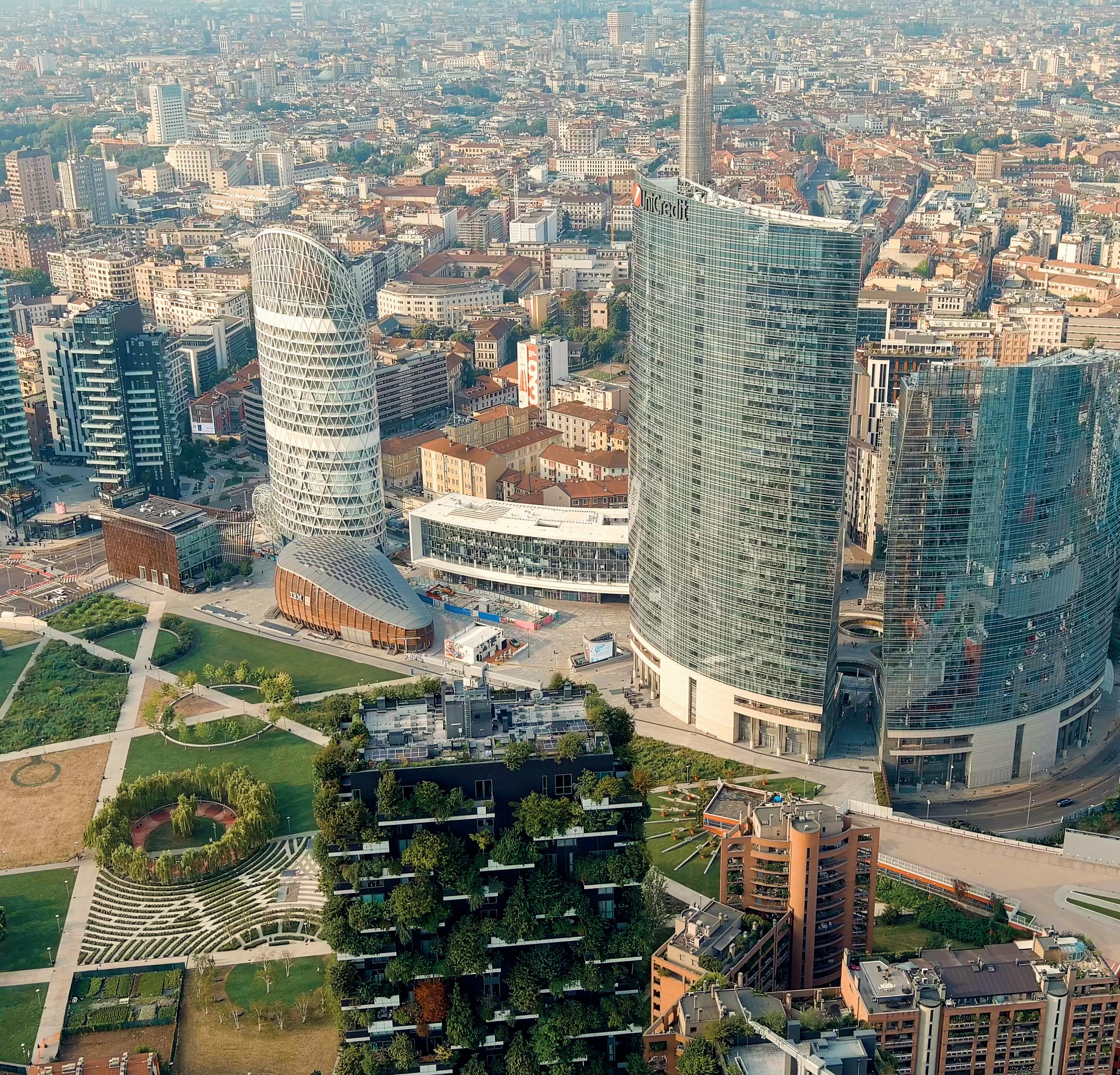
10
MARKET REPORT MILANO ROMA H2 2023 |
Fonte: Engel & Völkers
Prezzi e Canoni
Centro Storico
Nel secondo semestre 2023, il mercato del Centro Storico è caratterizzato da una generalizzata stazionarietà dei prezzi medi degli immobili per le proprietà ristrutturate al nuovo, il cui range si conferma molto ampio tra i vari quartieri. Le quotazioni top nel Centro Storico hanno confermato i 24.000 EUR/mq nel Quadrilatero e i 21.000 EUR/mq a Brera e nella zona Castello-Foro Buonaparte. Stabili anche i valori massimi di San Babila e Cordusio, tra i 18.000 e i 19.000 EUR/mq.
Con riferimento alla locazione, continuano a crescere i canoni medi delle abitazioni nuove/ristrutturate, che variano tra 360 e 460 EUR/mq/anno, delle abitazioni in buone condizioni sui 220-300 EUR/mq/anno.

11
MARKET REPORT MILANO ROMA H2 2023 |
Fonte: Engel & Völkers

La Zona Ovest
I prezzi medi degli immobili di pregio nella Zona Ovest confermano i livelli del semestre precedente in tutte le localizzazioni. Le quotazioni delle proprietà ristrutturate al nuovo variano tra 4.200-6.500 EUR/mq di Gambara-Bande Nere e San Siro ai circa 10.000 EUR/mq di Sempione-Arco della Pace-Chinatown e Vercelli-Washington. Rimangono fuori range le quotazioni di City Life: 8.000-15.000 EUR/
mq. Sono, per contro, stazionari i prezzi delle abitazioni da ristrutturare.
Aumenta invece il livello medio dei canoni di locazione degli immobili nuovi e ristrutturati al nuovo, compresi tra 260370 EUR/mq/anno e delle proprietà in buone condizioni, assestate tra 230-330 EUR/mq/anno.
12
Fonte: Engel & Völkers
MARKET REPORT MILANO ROMA H2 2023 |
La Zona Est
I prezzi medi della Zona Est presentano quotazioni in crescita nella zona di Porta Venezia e Indipendenza-Cinque Giornate-XXII Marzo per le proprietà nuove o ristrutturate al nuovo. I valori di compravendita sono compresi nel range 4.500-9.600 EUR/mq. Allo stesso tempo flettono in modo
generalizzato i valori delle abitazioni da ristrutturare.
Si confermano in crescita i canoni medi di locazione sia per le abitazioni nuove/ristrutturate (285-365 EUR/mq/anno), sia per le proprietà in buone condizioni (155-210 EUR/mq/ anno).

13
MARKET REPORT MILANO ROMA H2 2023 |
Fonte: Engel & Völkers
La Zona Nord
La Zona Nord comprende aree caratterizzate da range di prezzi significativamente differenti, per la presenza concomitante di sviluppi residenziali di grande pregio e di aree meno prestigiose. I prezzi medi crescono nei quartieri di Porta Nuova-XXV Aprile e Garibaldi-Moscova-Arena, in cui i prezzi medi top raggiungono quota 19.800 EUR/mq e 13.000 EUR/mq rispettivamente. Per contro, le zone di Centrale-Loreto e Isola-Gioia-Maggiolina confermano il range compreso tra 5.000 e 7.200 EUR/mq. Crescono su base semestrale i canoni di locazione medi delle abitazioni nuove/ristrutturate, compresi tra 285-495 EUR/mq/anno.
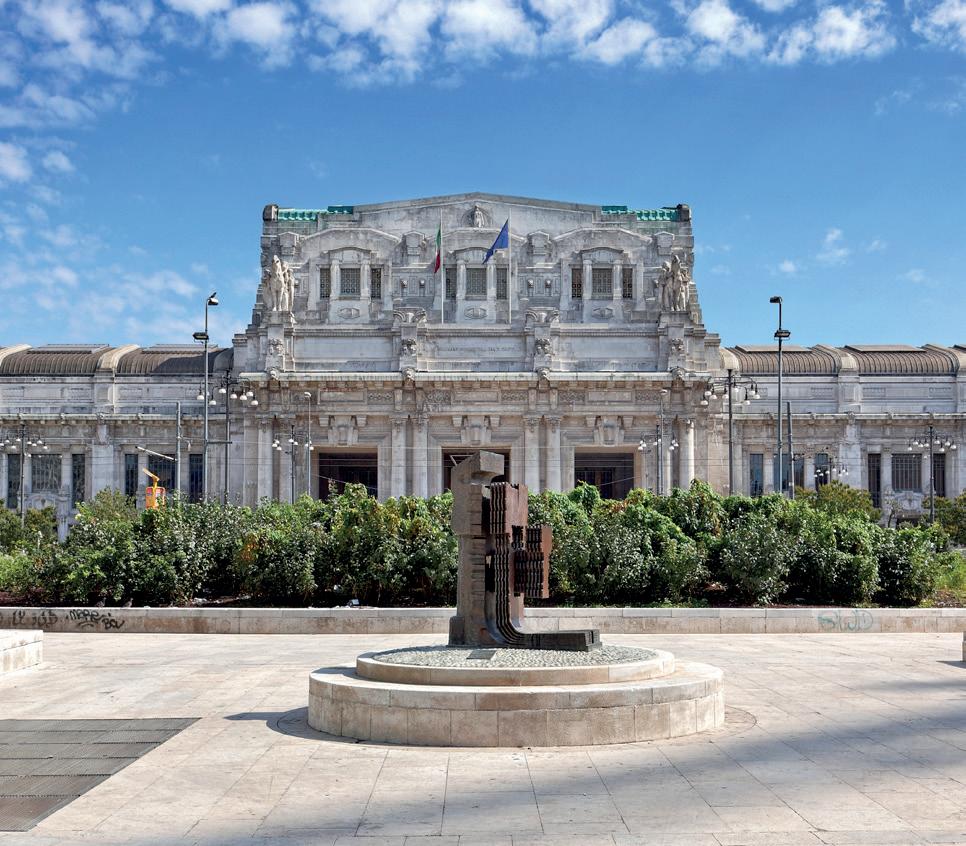
Fonte: Engel & Völkers
La Zona Sud
Le quotazioni medie della Zona Sud scontano una flessione semestrale per le abitazioni nuove o ristrutturate al nuovo, con l’eccezione del quartiere di Porta Romana-CrocettaQuadronno dove i prezzi medi sono in crescita. Per gli immobili nuovi, il range dei valori varia tra 6.500 EUR/mq di Medaglie d’Oro-Lodi e gli 11.000 EUR/mq di Porta RomanaCrocetta-Quadronno.
In aumento per contro i canoni di locazione sia per le abitazioni nuove e ristrutturate al nuovo, compresi nel range 255-395 EUR/mq/anno, sia per le abitazioni da ristrutturare.
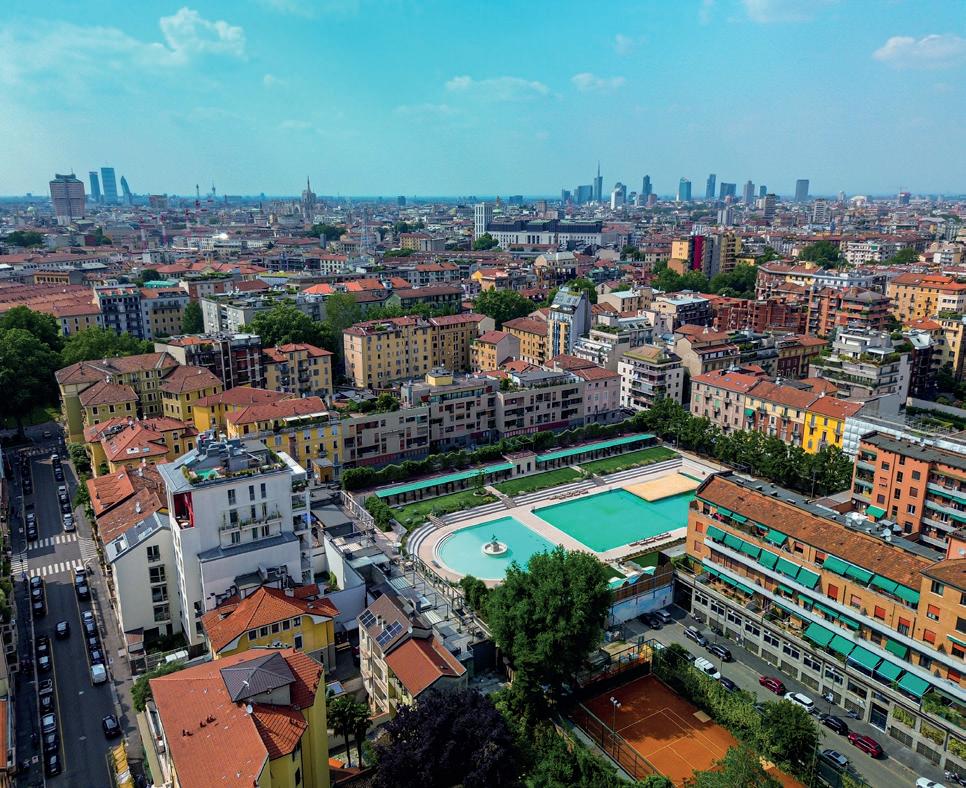
14
MARKET REPORT MILANO ROMA H2 2023 |
15
Fonte: Engel & Völkers
MARKET REPORT MILANO ROMA H2 2023 |
Fonte: Engel & Völkers
16
Fonte: Engel & Völkers
MARKET REPORT MILANO ROMA H2 2023 |
Fonte: Engel & Völkers
Il Punto su Milano
Intervista
Gabriele Borgnino
Office Manager Engel & Völkers Milano Porta Romana
Antonio Trimboli
Office Manager Engel & Völkers Milano Fiera
Marco Sorbara
Direttore Generale Engel & Völkers Milano
Roberto Magaglio
Licence Partner Engel & Völkers Milano
D.: Come sta cambiando Milano con i nuovi progetti di riqualificazione urbana?
R.: Gabriele Borgnino
La grande riqualificazione urbana di Milano è iniziata in concomitanza con Expo 2015 e con i due grandi sviluppi immobiliari di Porta Nuova e City Life. Il primo a nord e il secondo a ovest della città hanno introdotto grattacieli e nuove architetture firmate da archistar alle quali i milanesi non erano abituati ma a cui, dopo le prime fredde e diffidenti reazioni, si sono affezionati. Oggi tali zone sono tra i più apprezzati interventi di sviluppo immobiliare, anche per l’impatto di riqualificazione sui quartieri circostanti. La nuova sfida sarà sfruttare il prossimo evento internazionale - le Olimpiadi invernali del 2026 - per replicare l’effettoExpo sulla città. Gli scali ferroviari dismessi sono diventati oggetto di grande attenzione: Porta Romana a sud e l’ex scalo Farini a nord. Lo Scalo di Porta Romana sarà sede del Villaggio Olimpico e successivamente l’intera area verrà collegata al resto della città attraverso percorsi pedonali nel parco verso gli edifici riconvertiti in uffici, spazi retail e residenze di ultima generazione. In sostanza la città è in continua espansione e la mancanza di nuovo suolo edificabile porta alla necessità di riconvertire le aree dismesse in poli urbani con pluralità di destinazioni d’uso, attente al green e all’eco sostenibilità.
D.: L’andamento del mercato della locazione
R: Antonio Trimboli
Il mercato della locazione si presenta come una costante fonte di interesse, rispecchiando le dinamiche economiche e sociali della città. Dopo un periodo di forte contrazione dovuto alla pandemia, il 2022 ha segnato una ripresa in tutti i segmenti della locazione.
Nel 3° trimestre 2023, l'OMI ha registrato un calo tendenziale rispetto all'anno precedente. Analizzando più attentamente il contesto milanese, emerge una contrazione nel numero dei contratti nel segmento ordinario a lungo
termine, ma con canoni rimasti nella sostanza stabili. Tale diminuzione, nonostante l’aumento della domanda, è effetto del costante riversamento del prodotto sui mercati di mid e short term. Le locazioni transitorie, gli alloggi per studenti e le locazioni brevi mantengono un forte interesse, registrando anche un incremento nei canoni.
Le prospettive per il 2024 indicano un aumento medio dei canoni intorno al 2%. Un punto di particolare rilievo è l'aspettativa di incrementi percentuali più elevati nelle aree periferiche, sempre più attrattive grazie a diversi fattori, tra cui la disponibilità di spazi più ampi, una maggiore tranquillità e costi più accessibili rispetto alle zone centrali. Questa dinamica suggerisce che il mercato immobiliare milanese si stia adattando alle mutevoli esigenze e preferenze degli acquirenti e degli inquilini, aprendo nuove opportunità e sfide nel panorama immobiliare cittadino.
D.: L’andamento del mercato degli investimenti a Milano
R.: Marco Sorbara
Il segmento degli investimenti ha assorbito il trend generale del mercato immobiliare milanese che ha registrato una sensibile diminuzione degli scambi a fronte di valori stabili per il prodotto di elevata qualità e lievi riduzioni per il resto della gamma. La principale finalità di acquisto per investimento è la locazione alla luce del costante aumento della domanda e della diffusa scarsità di prodotto; in particolare di quello destinato alle locazioni di media e lunga durata, circostanze che favoriscono stabilità nei canoni medi e ulteriore crescita in quelli relativi alle locazioni di immobili prime.
Nonostante ciò, anche il mercato degli investimenti ha registrato una percettibile diminuzione nel numero delle compravendite. Il fenomeno è certamente influenzato dal ridimensionamento dei rendimenti da locazione, dettato dai valori di acquisto che rimangono elevati e, al contempo, dai tassi di interesse che erodono in buona parte il rendimento, scoraggiando o escludendo gli acquirenti con necessità di credito. Dall’altra parte, gli acquirenti senza necessità di una leva per l’acquisto riscontrano maggior possibilità di scelta e migliori condizioni.
Rimane altresì stabile l’interesse per gli acquisti finalizzati a investimenti di lunga durata, in particolare quelli a vantaggio dei propri figli, trasferiti a Milano per studio o lavoro, che utilizzeranno l’immobile nel breve e lo rivenderanno o concederanno in locazione in futuro.
D.: Come si è concluso il 2023 e qual è l’outlook per il 2024?
R.: Roberto Magaglio Il 2023 è stato il primo anno new-normal dopo le fiammate
17
MARKET REPORT MILANO ROMA H2 2023 |
del Covid. La domanda di sostituzione post pandemia si è progressivamente esaurita con il graduale ritorno alla normalità, mentre l’incredibile sequenza di aumenti dei tassi di interesse iniziata a fine 2022 ha completamente cambiato il contesto finanziario di riferimento, facendo drasticamente diminuire la possibilità di accedere ad un mutuo o rendendolo estremamente più costoso.
L’attenzione europea al consumo energetico degli edifici si è progressivamente riflessa dalla scorsa primavera sui desiderata delle ricerche sfavorendo gli immobili con classe energetica inferiore a D, praticamente tutti eccetto gli immobili nuovi o costruiti negli ultimi 10 anni. Inoltre, il rincaro delle materie prime ha cristallizzato l’aumento dei costi di ristrutturazione degli immobili, riflettendosi sui prezzi.
Da ultimo il ridimensionamento degli incentivi per il rientro dei cervelli ha indebolito di questa componente la domanda di immobili di lusso, in particolare modo a Milano, unica vera proxy italiana di una città internazionale.
L’importante riduzione del numero di compravendite non
ha ancora avuto impatto sui prezzi, che si confermano tendenzialmente inelastici rispetto al contesto di riferimento. Le nostre metriche aziendali riflettono il peggioramento del contesto in atto: più visite per vendere un immobile, più tempo, più sconto, più immobili in vendita. La buona notizia è che i tassi di interesse hanno smesso di crescere e potrebbero iniziare una fase di discesa e che gli acquirenti investitori già dall’ultimo trimestre 2023 sono tornati sul mercato in cerca di opportunità; inoltre l’evento Milano - Cortina, pivot di molti investimenti, si avvicina. Per il 2024 ci aspettiamo un anno di progressiva stabilizzazione del mercato, con i primi due trimestri ancora con segno negativo sul numero di compravendite ma con prezzi stabili ed un aumento di velocità nella seconda parte dell’anno specie in caso di riduzione dei tassi di interesse. Il 2023 è stato un anno di conflitti e di grande incertezza e volatilità; ci auguriamo che il 2024 sia l’anno della svolta tornando ad una nuova normalità anche in campo geopolitico.

18 MARKET REPORT MILANO ROMA H2 2023 |
Il mercato residenziale di pregio a Roma
2.751.325
Popolazione (31/10/2023)
-15,5%
Compravendite res. Q3 YTD 23
Fonte: Istat, Agenzia delle Entrate e Engel & Völkers
Congiuntura e Outlook
3,5K-4,9K
Nuovo/ristrutturato, prezzo €/mq
Nel mercato romano, il volume delle compravendite residenziali dei primi tre trimestri del 2023 evidenzia una flessione del 15,5% tendenziale, con solo 25.157 compravendite rispetto alle 29.760 dello stesso periodo del 2022. La battuta di arresto della crescita delle transazioni interrompe una crescita che ha caratterizzato tutti gli anni dal 2015 in avanti, con la sola eccezione del 2020, anno della pandemia. La congiuntura negativa che accomuna Roma al complesso dei capoluoghi italiani, che hanno registrato un calo medio del -12,7%, è dovuta al raffreddamento del mercato dei mutui, a causa del progressivo innalzamento del tasso di interesse sui prestiti durato per tutto il 2023.
Con riferimento al segmento di pregio, nel secondo semestre 2023, il mercato romano della compravendita ha registrato domanda e offerta nel complesso stazionarie, con prezzi medi stabili e numero di compravendite stazionarie, con l’eccezione del Centro Storico dove si è riscontrato un incremento degli immobili transati. Sul fronte della locazione, la scarsità dell’offerta di affitto tradizionale favorisce l’incremento del livello dei canoni, a fronte di una domanda nel complesso stazionaria.
160-310
Nuovo/ristrutturato, canone €/mq/anno
10K
Nuovo/ristrutturato, Top Price €/mq
Più nel dettaglio, l’andamento del mercato del Centro Storico è positivo anche nel secondo semestre dell’anno, soprattutto per quanto riguarda il comparto degli immobili di prestigio, con metrature fino a 250mq e dimore dotate di terrazzi, box auto e affacci panoramici. Trastevere e Testaccio si confermano zone vivaci sotto il profilo immobiliare. A queste si aggiungono Esquilino, Celio, Campo Marzio, Borgo, Parione, Monteverde Vecchio, con una ripresa della zona Aventino con tagli adatti a coppie giovani e ad uso ricettivo. La domanda si focalizza prevalentemente sui trilocali e bilocali. La domanda estera, stabile, è prevalentemente di origine nordeuropea e mostra maggiore interesse verso gli immobili localizzati in zone centrali di prestigio.
La zona Prati-Vaticano riscuote un costante interesse da parte dei residenti con aumento della domanda. Nei dintorni del Vaticano, in particolare, si sta verificando un aumento degli acquisti per investimento, in vista del Giubileo 2025.
La Zona Nord ha assistito ad un trend discontinuo della domanda, a causa della maggiore difficoltà di accesso al
19
Fonte: elaborazioni Nomisma su dati Agenzia delle Entrate
Fonte: Nomisma, Indice di performance residenziale
MARKET REPORT MILANO ROMA H2 2023 |
credito, sebbene il secondo semestre abbia registrato un lieve incremento delle transazioni rispetto al primo, in alcune zone. Il quartiere Balduina, in particolare, sta riscontrando un risveglio d’interesse, così come le aree di Piccolomini e Gregorio VII. La domanda di acquisto è tuttavia aumentata maggiormente nelle localizzazioni centrali, in controtendenza con gli ultimi anni.
Allontanandosi dal centro, il quartiere Montesacro mostra un leggero calo del mercato rispetto al semestre precedente, con una diminuzione delle richieste soprattutto nel segmento medio. In quest’area le zone più richieste sono Città Giardino e le nuove costruzioni a Casal Boccone, Porte di Roma e Nuovo Salario. L’acquisto di prima casa e

sostituzione è predominante, ma nelle zone più centrali cresce la domanda di investimento. Nelle aree adiacenti alle università, come Bologna, San Lorenzo, Trieste e Parioli, persiste l’investimento finalizzato alla locazione a studenti, mentre nelle zone più centrali, come Flaminio e Sallustiano, gli investimenti immobiliari sono maggiormente orientati a destinazioni ricettive.
Nella Zona Ovest la lieve ripresa percepita alle fine del primo semestre si è stabilizzata senza ulteriore crescita. La domanda di acquisto, costituita prevalentemente da giovani coppie e famiglie, è particolarmente interessata alle zone di Monteverde Nuovo e Gianicolense, grazie alla localizzazione e alla presenza di aree verdi. La domanda è di prima casa o sostituzione per famiglie o giovani coppie, interessate, rispettivamente, a immobili di medio-grande dimensione da ristrutturare e personalizzare o a bilocali ristrutturati. La presenza diffusa di servizi e aree verdi, oltre alla buona accessibilità stradale, fanno di Monteverde Nuovo la zona più interessante per l’investimento, vista anche la presenza di importanti ospedali.
Nella Zona Sud la domanda per acquisto è stabile per le zone di maggiore pregio - EUR e Torrino Nord - e in lieve flessione nelle localizzazioni meno interessanti. In zona Montagnola e Garbatella rimane prevalente il mercato di sostituzione delle famiglie, che prediligono l’acquisto di proprietà ristrutturate e pronte all’uso. Torrino Nord e Mostacciano restano attrattive per l’accessibilità a tutti i servizi, in zona tranquilla e ricca di verde. L’acquisto per investimento nella zona EUR è rivolto prevalentemente a tagli piccoli localizzati a EUR Centro, in virtù della presenza di potenziali locatari collegati alle molte società presenti in zona, mentre nelle aree più vicine al centro - ad esempio Re di Roma - si è rilevata un’impennata di acquisti da destinare a locazione short term, anche in vista del Giubileo 2025.
20
MARKET REPORT MILANO ROMA H2 2023 |
Fonte: Engel & Völkers
Fonte: Engel & Völkers
Il mercato della locazione conferma il forte squilibrio tra una pressante domanda e la sempre maggiore scarsità di offerta, dovuta alla migrazione verso il settore ricettivo, attraverso gli affitti short term. Tale dinamica non può che impattare sul livello dei canoni, in progressivo aumento, in un mercato caratterizzato da tempi di assorbimento pressoché immediati e sconti nulli, oltre a casi di offerte al rialzo. Si registra un incremento di investimenti anche ad uso residenziale per locazioni transitorie. Gli immobili maggiormente ricercati si confermano quelli in zona semicentrale di qualità, prevalentemente localizzati nella zona Nord, e in particolare per i quartieri di Vigna Clara, Farnesina, Trieste e Salario. La preferenza dei locatari va alle abitazioni ristrutturate al nuovo, funzionali ed efficientate, mentre la presenza di spazi generosi e prossimità ad aree verdi rimane un plus molto gradito.
Outlook H1 2024
L’outlook per il primo semestre 2024 vede, per il mercato della compravendita, un trend stazionario delle transazioni in tutte le zone, associato a stabilità delle quotazioni. Il forte aumento, rispetto a pochi anni fa, dei tassi di interesse applicati ai mutui continuerà infatti ad impattare sulle decisioni di acquisto di famiglie e investitori, calmierando la domanda.
Le attese per il mercato della locazione sono nel complesso stazionarie sia per numero di contratti, sia per livello dei canoni in tutte le zone urbane. Nel medio termine si prevedono ulteriori criticità legate alla scarsità dell’offerta, in conseguenza della probabile migrazione di ulteriori proprietà verso gli affitti short term in concomitanza con il Giubileo 2025.

21
MARKET REPORT MILANO ROMA H2 2023 |
Prezzi e Canoni

Centro Storico e Prati Vaticano
Nel Centro Storico i prezzi medi variano all’interno di un range molto ampio in considerazione della localizzazione dell’immobile, del suo stato di manutenzione e della vicinanza ai punti d’interesse storici, paesaggistici e istituzionali. Per le abitazioni ristrutturate, le quotazioni vanno da 3.000 EUR/mq a 10.000 EUR/mq per i quartieri più esclusivi. Gli sconti medi sul prezzo richiesto sono compresi tra 5% e 7%, a seconda dello stato e delle caratteristiche dell’immobile. I tempi medi di vendita sono
tra 5 e 7 mesi. Nella zona Prati-Vaticano il range dei prezzi medi si conferma compreso tra 4.200 e 7.000 EUR/mq per le abitazioni ristrutturate al nuovo. I tempi medi di vendita variano tra i 2 e i 7 mesi.
Sono stazionari i canoni per le residenze ristrutturate in Centro Storico (170-410 EUR/mq/anno), mentre aumentano nella zona Prati-Vaticano (215-330 EUR/mq/anno). I tempi medi di locazione spaziano da pochi giorni a 7 mesi circa, a seconda delle caratteristiche della proprietà offerta.
22
MARKET REPORT MILANO ROMA H2 2023 |
Fonte: Engel & Völkers
23
Fonte: Engel & Völkers
MARKET REPORT MILANO ROMA H2 2023 |
Fonte: Engel & Völkers
La Zona Nord
I prezzi medi presentano trend stazionari su base semestrale, ad eccezione di Talenti-Monte Sacro che registra una flessione. Le quotazioni nella zona variano da EUR 2.700 a 7.000 EUR/mq per le abitazioni nuove o ristrutturate al nuovo. Lo sconto medio sul prezzo richiesto conferma una grande diversità in base al quartiere, variando tra il 2% e il 20%.
I tempi medi di vendita si allungano leggermente, compresi tra 2 e 8 mesi.
Si contrae il range dei canoni medi, in calo rispetto al semestre precedente per le abitazioni nuove/ristrutturate (135-350 EUR/mq/anno). I tempi medi di locazione variano da 1 mese a circa 12 mesi, secondo lo stato e la localizzazione dell’immobile.
24
Fonte: Engel & Völkers
MARKET REPORT MILANO ROMA H2 2023 |
La Zona Ovest
I prezzi medi sono stazionari su base semestrale in tutti i quartieri della macroarea, sia per le abitazioni nuove o ristrutturate al nuovo, sia per quelle da ristrutturare. I valori di compravendita restano compresi nel range 2.700-4.100 EUR/mq per le proprietà nuove o ristrutturate al nuovo e nel range 2.300-3.600 EUR/mq per quelle da ristrutturare.
La Zona Sud
I prezzi medi delle abitazioni nuove o ristrutturate presentano trend eterogenei rispetto al semestre precedente, con quotazioni stazionarie in Laurentino e San Giovanni-Appio Latino e in crescita nelle restanti zone. All’EUR e in Torrino acquistano valore le proprietà nuove o ristrutturate al nuovo, mentre calano i prezzi medi di quelle da ristrutturare. I valori medi vanno dai 2.400 EUR/mq della zona Laurentino ai 4.800 EUR/mq di San Giovanni-Appio Latino e EUR per gli immobili nuovi o ristrutturati al nuovo. Si conferma il range dello sconto medio sul prezzo richiesto, compreso tra 3-15%, così come i tempi medi di vendita che variano da 1 a 8 mesi.
Flette il livello medio dei canoni, con i valori degli immobili nuovi/ristrutturati compresi tra 130-270 EUR/mq/anno. I tempi medi di collocamento sul mercato della locazione sono spesso inferiori a 1 mese, ma possono arrivare a 9 mesi, secondo le caratteristiche dell’immobile.
Lo sconto medio varia tra 7-20%. I tempi medi di vendita si riducono, assestandosi tra 1 e 9 mesi.
Restano stabili i canoni medi di locazione su base semestrale per le abitazioni nuove o ristrutturate (170-230 EUR/mq/anno), con tempi medi di assorbimento compresi tra pochi giorni e 2 mesi.

25
Fonte: Engel & Völkers
MARKET REPORT MILANO ROMA H2 2023 |
26
Fonte: Engel & Völkers
MARKET REPORT MILANO ROMA H2 2023 |
Fonte: Engel & Völkers

27
MARKET REPORT MILANO ROMA H2 2023 |
Fonte: Engel & Völkers
Il Punto su Roma
Intervista
Helio Cordeiro Teixeira
Managing Director Market Center Engel & Völkers
Francesco Errico
Team Leader Locazioni Market Center Engel & Völkers Roma
D.: Qual è il trend della domanda di acquisto nel 2° semestre 2023?
R.: Helio Cordeiro Teixeira
Rispetto al biennio precedente (2021-2022), segnato da una performance vigorosa del settore immobiliare, il 2023 è stato caratterizzato da un clima di incertezze dovuto ai vari eventi che hanno impattato sulla macroeconomia mondiale e nazionale. L’aumento dell’inflazione e dei tassi di interesse, la conseguente difficoltà di accesso al credito e l’indebolimento del potere di acquisto delle famiglie sono gli aspetti che maggiormente hanno contribuito ad un trend di disorientamento e di attesa nei clienti. Il confronto con questa nuova realtà e la difficoltà di comprendere lo sviluppo futuro non hanno consentito pertanto agli acquirenti privati e istituzionali di compiere serenamente un passo verso l’investimento, la sostituzione o l’acquisto della prima casa.
In questo nuovo scenario, se da una parte ci siamo confrontati con un rallentamento dell’offerta, dall’altra abbiamo assistito ad una forte richiesta da parte di clienti provenienti dal ceto alto/medio alto, con buona liquidità disponibile e tempi brevi di realizzazione.
Il mercato della Capitale è stato inoltre caratterizzato da prezzi mediamente stabili e tempi di vendita intorno a 4-6 mesi, ad eccezione degli immobili di prestigio e/o con particolari caratteristiche che sono stati premiati dal mercato.
In sintesi, nonostante la contrazione generalizzata del settore, il Market Center di Roma ha concluso positivamente il 2023, con un volume di fatturato in leggera crescita rispetto al 2022, con l’incremento del portafoglio di oltre 1.100 nuovi prodotti e oltre 650 transazioni immobiliari concluse tra vendite e locazioni.
D.: Qual è il trend della domanda di locazione nel 2° semestre 2023?
R.: Francesco Errico
Il trend è in linea con quello registrato fino ad ora, con una domanda molto elevata che fatica a concludersi secondo gli iniziali parametri causa carenza di offerta sul mercato. Questo meccanismo sta generando chiaramente un generale incremento dei canoni soprattutto per immobili che si presentano con un elevato livello di qualità. La domanda è caratterizzata dal mercato locale che predilige
ormai le zone semicentrali per maggiore comodità con metrature più ampie utili per il lavoro da casa, a discapito del centro storico lasciato agli stranieri o giovani italiani in trasferimento su Roma per periodi transitori brevi (12-15 mesi).
È presente una forte domanda estera caratterizzata dai trasferimenti di lavoro presso ambasciate ed organizzazioni internazionali, così come quella italiana legata alle aziende. Si conferma sempre la richiesta di locazioni temporanee, in alcuni casi in attesa di perfezionare un acquisto.
D.: Qual è il ruolo dello short term nel mercato della locazione?
R.: Francesco Errico
Gli affitti brevi stanno inevitabilmente impattando il mercato della locazione residenziale con un importante ed evidente erosione di prodotto. Questo comporta una difficile ricerca per la domanda che in alcuni casi porta ad offerte anche più alte rispetto alla richiesta, al fine di ottenere l’immobile individuato. L’alternativa del residenziale è quella degli affitti transitori che incontrano una buona fetta della domanda e rappresentano per i proprietari una via di mezzo per poter comunque avere un’ottima rendita e la restituzione dell’immobile in tempi ridotti (evitando rischi di morosità). Si attende un progressivo maggiore impatto a causa del Giubileo 2025.
D.: Quali sono le vostre previsioni per la prima parte del 2024?
R.: Helio Cordeiro Teixeira Non ci sono elementi certi che possano fornirci ad oggi un quadro chiaro di quale sarà l’andamento del mercato nel 2024. Come anticipato nel precedente Market Report H1 2023, la Capitale potrà beneficiare degli investimenti previsti dal PNRR, del Giubileo e di un crescente flusso nel turismo, aspetti che insieme renderanno più dinamici alcuni fondamentali settori, come quello della ristorazione e ricettivo.
Oltre a questi aspetti di interesse locale, l’aspettativa di una diminuzione dei tassi d’interesse, il contenimento del tasso inflattivo e il graduale recupero del potere d’acquisto delle famiglie potrebbero avviare la ripresa di un trend della fiducia, per ora “sospesa”, verso l’investimento immobiliare da parte di clienti privati e istituzionali.
Per il settore delle locazioni si prevede invece un trend in linea con il 2023, con i canoni che dovrebbero continuare a crescere vista l’elevata domanda e la scarsa offerta di prodotti sul mercato.
Gli immobili di qualità, nelle aree centrali e semicentrali, continueranno ad avere i maggiori incrementi ed in
28
MARKET REPORT MILANO ROMA H2 2023 |
quest’ottica si attende un incremento di investitori interessati alla generazione di redditi. Pensiamo comunque di affrontare il 2024 proseguendo negli obiettivi già pianificati, non solo nella crescita di volume, ma nel continuo miglioramento nella qualità dei nostri servizi e della nostra capacità di presidiare in modo sempre più capillare il mercato immobiliare nelle città dove
siamo presenti con gli investimenti diretti da parte del Gruppo.
A tal proposito è stato inaugurato nel settembre 2023 un nuovo Market Center a Roma, nella zona di Cinecittà, con l’obiettivo di servire il quadrante sud-est e la zona dei Castelli Romani, ritenute potenziali e di interesse strategico per i prossimi anni.

29
MARKET REPORT MILANO ROMA H2 2023 |

Il mercato di Milano e Roma in sintesi
Nel secondo semestre del 2023 il mercato immobiliare residenziale continua a risentire delle onerose condizioni di accesso al credito, a cui la domanda reagisce con attendismo. La gradualità con cui i tassi di interesse sui mutui stanno tornando su valori più contenuti ha rappresentato per tutto l’anno un freno all’erogazioni di prestiti, deprimendo il volume transato, che nei primi tre trimestri dell’anno è diminuito a Roma del 15,5% e a Milano del 16,8% tendenziale.
A Milano, sul mercato di pregio, la contrazione delle compravendite non si è ancora trasmessa sul livello dei prezzi, nel complesso stazionario. Permane un forte squilibrio tra la robusta domanda di locazione e la scarsità dell’offerta di qualità, erosa in modo rilevante dal fenomeno degli affitti short term. La dinamica impatta sul livello dei canoni, in progressivo aumento, azzerando i tempi di assorbimento e gli sconti. Nel capoluogo lombardo l’idea di città si sta ampliando e la separazione tra semicentro e periferia è via via sempre meno definita, in virtù del grande interesse per le zone oggetto di riqualificazione.
A Roma, il mercato di pregio è stato caratterizzato da prezzi mediamente stabili e tempi di vendita inferiori ai sei mesi. In Centro Storico in particolare, si è riscontrato un incremento degli immobili transati e un rinnovato interesse per gli
acquirenti nazionali ed esteri. È costante l’interesse per le aree prossime al centro, tra cui Prati-Vaticano. Sul fronte della locazione, la scarsità dell’offerta di affitto tradizionale ha favorito l’incremento dei canoni, a fronte di una domanda nel complesso stazionaria.
Nelle zone più centrali si rileva un aumento degli investimenti residenziali in vista del Giubileo 2025.
L’outlook per la prima parte del 2024 indica, per Milano, un trend di flessione delle transazioni in tutte le zone in un contesto di domanda attendista a causa delle dinamiche creditizie. Fa eccezione la zona Sud, per cui è attesa una maggiore vitalità del mercato. Nel comparto della locazione, le aspettative sono di calo dei contratti di locazione di lungo periodo a scapito del breve termine, in alcuni quartieri delle zone Est e Nord.
Per Roma, si prevede stazionarietà di contratti e quotazioni. Le difficoltà creditizie continueranno ad impattare sulle decisioni di acquisto di famiglie e investitori, calmierando la domanda. Le attese per il mercato della locazione sono nel complesso stazionarie sia per numero di contratti, sia per livello dei canoni. Nel medio termine, nelle zone più centrali, sono attese criticità legate alla scarsità dell’offerta, in conseguenza del probabile aumento di locazioni short term in concomitanza con il Giubileo 2025.
30 MARKET REPORT MILANO ROMA H2 2023 |

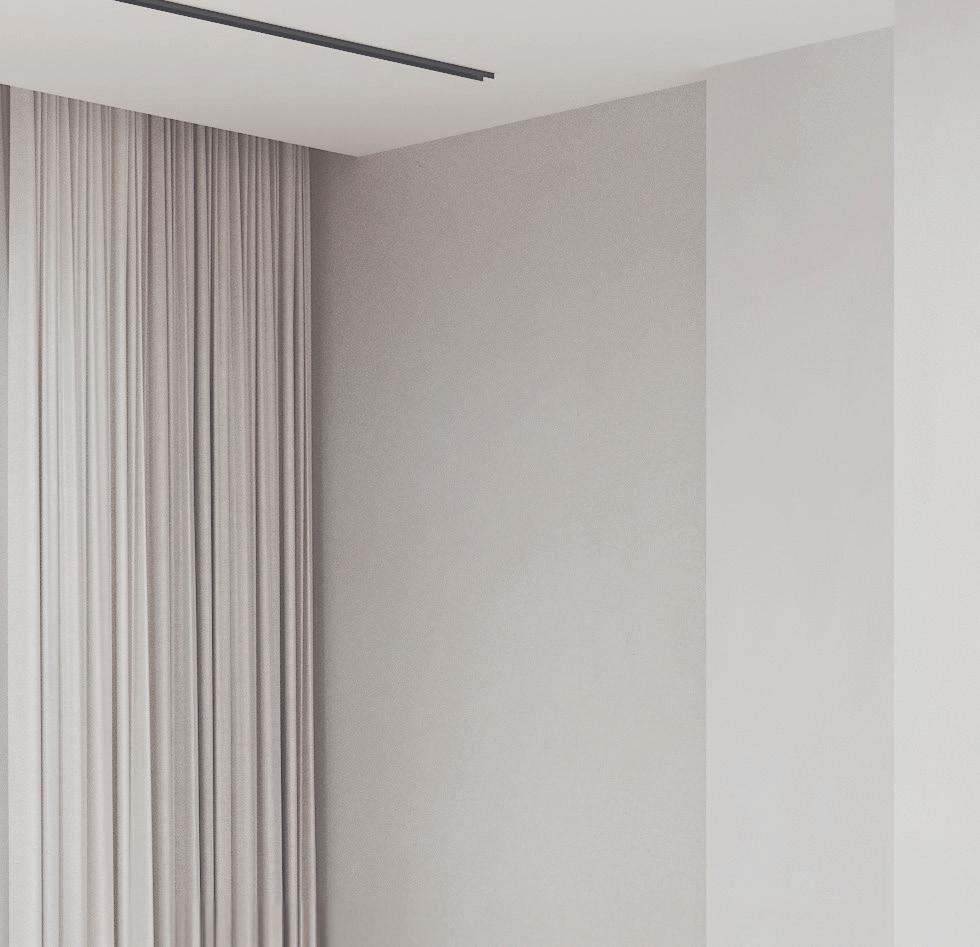







32



33 Market Report Milano Roma H2 2023 34 38 49 60 36 47 58 Edited by Engel & Völkers. Realized with the scientific support of Nomisma. ITALIAN ECONOMY PRIME HOUSING MARKET IN MILAN PRIME HOUSING MARKET IN ROME MILAN AND ROME MARKETS AT A GLANCE
ITALIAN REAL ESTATE MARKET MILAN’S REVIEW ROME’S REVIEW MARKET REPORT MILANO ROMA H2 2023 |
THE
Italian Economy

Economic Scenario and Outlook
The Italian economy remained stable in 2023 Q3 after the decline recorded in the second quarter of the year. The trend is stable, too, interrupting a growth that had lasted for ten consecutive quarters. The acquired GDP growth therefore stabilized at 0.7%.
In the context of a general slowdown in the global economy, and in particular in Europe, the Italian economy is expected to grow by +0.7% also in 2024, affected as it is by the weakening of the industrial sector and the decline in investments in construction. The conflicts in Ukraine and Gaza, the restrictive monetary policies of central banks as
well as extreme climate events are among the factors contributing to the ongoing slowdown in global growth. According to the consensus of the main institutional forecasters, expectations for Italy should improve slightly in the two-year period 2025-2026, with GDP growth of around 1% per year.
Inflation is slowing down thanks to the price trends of some types of services and processed foods. According to ISTAT (National Statistics Institute), the inflation acquired for 2023 is stable at +5.7% for the general index, while it rises to 5.1% for the core component.
34
-3 0 3 6 9 12 15 11 10 09 08 07 06 05 04 03 02 01 12 11 10 09 08 07 06 05 04 03 02 01 12 11 10 09 08 07 06 05 04 03 02 01 12 11 2021 2022 2023 Consumer price inflation and contributions of its components Source: Bank of Italy and National Institute of Statistics (Istat) % Harmonised index of consumer prices Core component Volatile component
Istat, Italian Revenue Agency and Nomisma 58,919,157 Population (31/10/2023) +0,7% GDP 2023 Annual change +5.7% Consumer Price Inflation 2023 -11.8% Home sales YTD-Q3 2023 +0.3% Housing av. price Italy 2023 H2 MARKET REPORT MILANO ROMA H2 2023 |
Source:
The Climate of Confidence
The slowdown phase of the Italian economy in the last months of the year is also underlined by the consumer and business confidence indexes, which highlighted a worsening of expectations, both of consumers and businesses. Among the latter, the exception is construction, which maintains a particularly high climate of confidence. On the opposite front, manufacturing companies show greater pessimism, evidenced by an index value that has fallen below the long-term average. In this context, however, it should be noted that in December 2023 an increase in both the consumer confidence climate, which rose from 103.6 to 106.7, and the business confidence climate, from 103.5 to 107.2, was recorded. In particular, an improvement is estimated in all components of the construction sector.

35
Source: Nomisma elaborations on Istat (Italian National Institute of Statistics) data 2019 | 2020 | 2021 | 2022 | 2023 Consumer Business MARKET REPORT MILANO ROMA H2 2023 |
The Italian Real Estate Market
Residential Sales
After the slowdown recorded in 2022 H2, the volume of sales in the residential sector suffered a trend decline of 8.3% in 2023 Q1 and a double intensity decline (-16%) in the following quarter. The econometric forecasts regarding the second half of the year indicate a continuation of the decline in sales of a magnitude just higher than that experienced in the first half of the year, so much so that 2023 will end with 684,000 transactions compared to the 784,000 of 2022, for a loss of 100,000 trades corresponding to a change rate of -12.8%.
The market contraction phase will also have a continuation in the following two years, albeit at a less intense pace, with drops of -8.8% and -3.6% respectively, which will bring the market back on a slightly lower number of transactions above 600,000 units, on the levels recorded in the preCovid period. The positive trend is expected to return only in 2026, with modest growth rates of less than two percentage points.
Price Trends
The average quarterly price indexes, published by the Bank of Italy in January 2024, show with great evidence the progressively increasing gap between current and actual prices during 2023, caused by the still ongoing inflationary blaze.
The drop in sales should lead to a slowdown in house prices in current values. The recessionary phase of transaction activity will transfer to real estate prices, causing a sharp slowdown in the growth in housing values recorded at the end of the pandemic phase.
Already in 2023 H2, house prices experienced a slowdown in growth compared to the first part of the year, with the cyclical change in the average of the 13 major markets equalling +0.3% against +1.0% in the first semester. The growth rates in the three-year forecast period will be of
similar magnitude, with slight variations in the order of half a percentage point per year (+0.6% in 2024, +0.5% in 2025 and +0.6% in 2026).
As far as individual cities are concerned, the situation is rather heterogeneous, with the markets of Padua, Naples, Milan, Florence and Bologna experiencing an overall growth of more than 2 percentage points at the end of the three-year forecast period, while those of Palermo, Bari, Cagliari and Catania will suffer a reduction in prices of between -1.2% and -2.5%.
Real Estate Financing
The gradual return of interest rates to lower values will represent a brake on the recovery of mortgage disbursements to families for the purchase of homes. Consequently, new disbursements, which had started to decline in the second half of 2022 (-7.5% trend variation) and which showed an intensification of the decline in the first half of 2023 (-32%), have record a contraction of the
36
350 450 550 650 750 850 '2026 '2025 '2024 '2023 '2022 '2021 '2020 '2019 '2018 '2017 '2016 '2015 '2014 '2013 '2012 '2011 '2010 '2009 '2008 '2007 '2006 '2005 '2004 Residential sales in Italy and 2023-2026 forecasts Source: Italian Revenue Agency final data; Nomisma forecasts Thousands 2016 | 2017 | 2018 | 2019 | 2020 | 2021 | 2022 | 23 Current Price Actual Price
Source: Italian Revenue Agency final data; Nomisma forecasts MARKET REPORT MILANO ROMA H2 2023 |
same size in the second part of the year, so much so that a negative change rate of -31% is estimated for the whole of 2023. The reference interest rates and, consequently, those of mortgages, should begin to gradually decline during 2024, remaining at medium-high values which will hinder the demand for credit. New mortgage disbursements will therefore continue to contract in the two-year period 2024 (-17%) and 2025 (-7%). According to Nomisma's forecasts, it will be necessary to wait until 2026 to see the first positive signs again, however modest (+2%).
Erogazione di mutui alle famiglie per l’acquisto di abitazioni (dati trimestrali; milioni di EUR)
Households financing disbursement for housing purchase and forecasts (quarterly data; EUR million)

37
Fonte: previsioni Nomisma a luglio 2023
0 2 4 6 8 10 12 14 16 18
Fonte: Nomisma
Disbursement Forecast Millions € 2015 2016 2017 2018 2019 2020 2021 2222 2023 2024 2025 2026
Source: Nomisma elaboration on Bank of Italy’s data; Nomisma’s forecasts
MARKET REPORT MILANO ROMA H2 2023 |
Prime housing Market in Milan
Situation and Outlook
In the first three quarters of 2023, the Milan residential market suffered a significant setback, with only 17,811 sales compared to 21,415 in the same period of 2022 (-16.8%). The negative economic situation concerns all the Italian capitals overall, which recorded an average decline of -12.7%. In the Lombardy capital, a preview of the downward trend can be found starting from the 2022 Q4, a record year for Milan which, with 28,600 sales, exceeded the already sensational results of 2021 and 2019 by 6% and 9% respectively.
In the market as a whole, the slowdown in sales affected the trend in the prices of new and used properties, which in the second half of 2023 showed growth that was still generalized but of a much reduced intensity compared to the previous half-year.
In the prime market, the contraction in sales has had minimal or no impact on the price level in most areas, due to the strong rigidity of supply. And yet, once the postpandemic market push has finally ended, we are witnessing a gradual realignment of supply and demand. In particular, the prime Milanese segment is affected by factors such as the reduction of bonuses for restructuring interventions, incentives for the "brain gain" from abroad, the increase in interest rates and the erosion of purchasing power of families. The market thus presents two speeds, divided
between those who need to buy and those who can afford opportunistic waiting.
Despite stable prices on a half-yearly basis, the market's downward trend is evident from the increase in sales times and average discounts. The absorption times for properties for sale have in fact lengthened compared to the first half of the year, going from 1-2 months to 2-3 months for properties in good condition, and reaching 6 months for properties to be renovated. Among the numerous construction sites, apartments for sale remain for the longest time.
The demand's interest is always aimed at the central areas for younger buyers and for investors looking at tourism, while families continue to prefer more decentralized areas with good services and connections.
The idea of the city is expanding and what was once considered a suburb is no longer so today. Great interest is found in the areas subject to redevelopment, including the case of Cascina Merlata, while strong attention is paid to Scalo Farini and Scalo Porta Romana, the only two large areas subject to redevelopment and real estate development. The San Siro area, on the other hand, which had seen an increase in interest during and immediately after the pandemic, now appears to be in a stalemate situation linked to the fate of the stadium and possible projects. The progressive rise in interest rates, which lasted
38
Source: Nomisma elaboration on Italian Revenue Agency data
Source: Nomisma Performance Index
1,370,056 Population (31/10/2023) -16,8% Home sales Q3 23 on Q3 22
New/ Renovated , price €/sqm 290-420 New/ Renovated , rent €/sqm
New/ Renovated , Top Price €/mq
Source: Istat, Italian Revenue Agency and Engel &
Völkers
6.9K-11.7K
24K
MARKET REPORT MILANO ROMA H2 2023 |
Source: Engel & Völkers
throughout 2023, had a lesser impact on the luxury segment, less dependent on credit, and on the new construction segment, the latter of which are particularly interesting for investors, by virtue of the high energy class. In a market that is increasingly sensitive to sustainability, also due to European legislation, energy class D now appears as a consolidated distinction between properties selling more quickly and those characterized by longer absorption times or more significant discounts.
In the leasing sector, the situation of great shortage of longterm products persists in a market in which 12-month leases are now considered long-term.
In the second half of 2023, an increase in the number of leases and their fees was recorded, a dynamic fuelled both by those excluded from the purchase market, increasingly inaccessible from a credit point of view, and by the constant incoming flow of students and workers, singles or couples, mainly interested in two-or three-room apartments. The increase in fees is attributable to the erosion of supply, due to the boom in short-term rentals which guarantee more advantageous economic returns compared to standard leasing contracts. Therefore, there remains a great shortage of apartments both for long-term leases and for sizes greater than 150-160 sqm.
Given the scarcity of the product, the absorption times are a few days for properties in good or excellent condition and approximately 1 month for used properties in less than optimal condition. Leases continue to record minimal, if any, discounts. The correction of these dynamics could only derive from regulatory innovations capable of structurally rebalancing the market.
2024 H1 Outlook
The outlook for the first half of 2024 indicates, for the sales market, a trend of decline in transactions in all areas, with the exception of the Southern area, related to the wait-andsee attitude of demand in the face of a more expensive mortgage market and selective compared to the recent past. Average prices are stationary with a downward trend in some neighbourhoods in the West, East and North areas. In the leasing sector, contracts are expected to remain stable in the Historical Centre, due to the progressive scarcity of supply and the presence of an increase in fees. Prices should grow, or at most remain stationary in all zones, against expectations of a decline in long-term leasing contracts in some neighbourhoods in the East and North.
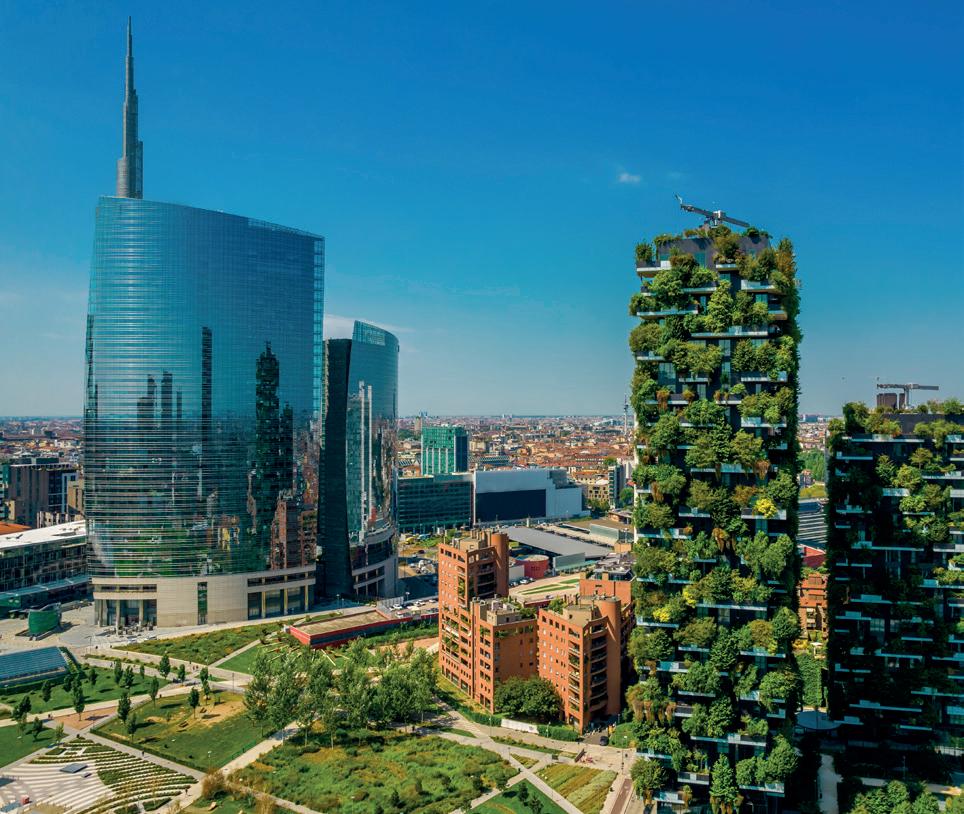
39
MARKET REPORT MILANO ROMA H2 2023 |

40
MARKET REPORT MILANO ROMA H2 2023 |
Fonte: Engel & Völkers
Prices and Fees
Historical City Centre
In 2023 H2, the Historic Center market is characterized by a generalized stationarity in average property prices for new or renovated properties, the range of which is confirmed to be very wide between the various neighbourhoods. The top prices in the Historical Centre reached € 24,000 per sqm in the Quadrilatero and € 21,000 per sqm in Brera and in the Castello-Foro Buonaparte area. The maximum values of San Babila and Cordusio are also stable, between € 18,000 and € 19,000 per sqm.
With reference to leases, the average fees for new or renovated properties, varying between € 360 and € 460 per sqm per year, as well as those for non-renovated assets (€ 220-300 per sqm per year) continue to grow.
 Source: Engel & Völkers
Source: Engel & Völkers
41
MARKET REPORT MILANO ROMA H2 2023 |

The Western Area
The average prices of prime properties in the Western Area confirm the levels of the previous six months in all locations.
Prices for newly renovated assets vary between € 4,2006,500 per sqm in Gambara-Bande Nere and San Siro to approximately € 10,000 per sqm in Sempione-Arco della Pace-Chinatown and Vercelli-Washington.
The prices of City Life remain out of range: € 8,000-15,000
per sqm. On the other hand, the prices of non-renovated assets remain stationary.
Conversely, the average fees for new and renovated assets increased, ranging between € 260-370 per sqm per year, as did the prices of non-renovated assets, ranging between € 220-330 per sqm per year.
Source: Engel & Völkers
42
MARKET REPORT MILANO ROMA H2 2023 |
The Eastern Area
Average prices in the Eastern Area show an increase in the Porta Venezia and Indipendenza-Cinque Giornate-XXII Marzo areas for new or renovated properties. Here, the sales prices range between € 4,500-9,600 per sqm. At the same time, the prices of non-renovated assets are declining
across the board.
Overall, average leasing fees increased both for renovated properties (€285-365 per sqm per year) and for nonrenovated ones (€155-210 per sqm per year).

43
MARKET REPORT MILANO ROMA H2 2023 |
Source: Engel & Völkers
The Northern Area
The area includes zones characterized by significantly different price ranges, due to the concomitant presence of highly prestigious residential developments and less prestigious areas. Average prices increased in the Porta Nuova-XXV Aprile and Garibaldi-Moscova-Arena districts, where the top average prices reach € 19,800 per sqm and € 13,000 per sqm respectively. Conversely, the areas of Centrale-Loreto and Isola-Gioia-Maggiolina confirmed the range between € 5,000-7,200 per sqm.
Average fees for new or renovated homes are growing on a semi-annual basis, ranging between € 285-495 per sqm per year.
 Source: Engel & Völkers
Source: Engel & Völkers
The Southern Area
The average prices of the Southern Area reflect a sixmonthly decline for new or renovated assets, except for the Porta Romana-Crocetta-Quadronno districts, where average prices are growing.
For new properties, prices range between € 6,500 per sqm for Medaglie d'Oro-Lodi and € 11,000 per sqm for Porta Romana-Crocetta-Quadronno.
On the other hand, fees are increasing both for new and renovated assets, included in the range € 255-395 per sqm per year, and for non-renovated ones.

44
MARKET REPORT MILANO ROMA H2 2023 |
Source:
45
Source: Engel & Völkers
MARKET REPORT MILANO ROMA H2 2023 |
Engel & Völkers
Source: Engel & Völkers
Source: Engel & Völkers
46
MARKET REPORT MILANO ROMA H2 2023 |
Milan’s Review
Interview
Gabriele Borgnino
Office Manager Engel & Völkers Milan Porta Romana
Antonio Trimboli
Office Manager Engel & Völkers Milan Fiera
Marco Sorbara
General ManagerEngel & Völkers Milan
Roberto Magaglio Licence Partner Engel & Völkers Milan
Q.: How is Milan changing with the new urban redevelopment projects?
A.: Gabriele Borgnino
The great urban redevelopment of Milan began in conjunction with Expo 2015 and with the two large real estate developments of Porta Nuova and City Life. The first to the north and the second to the west of the city, they both have introduced skyscrapers and new architecture designed by star architects to whom the Milanese were not accustomed but to whom, after the first cold and wary reactions, they have grown fond of. Today these areas are among the most popular real estate development interventions, also due to the redevelopment impact on the surrounding neighbourhoods. The new challenge will be to exploit the next international event - the 2026 Winter Olympics - to replicate the Expo effect on the city. Disused railway yards have become the object of great attention: Porta Romana to the south and the former Farini yard to the north. The Porta Romana yard will be home to the Olympic Village and subsequently the entire area will be connected to the rest of the city through pedestrian paths in the park towards the buildings converted into offices, retail spaces and latest generation residences. In essence, the city is constantly expanding and the lack of new building land leads to the need to convert abandoned areas into urban hubs with multiple uses, attentive to green policies and eco-sustainability.
Q.: The trend of the leasing market
A: Antonio Trimboli
The leasing market presents itself as a constant source of interest, reflecting the economic and social dynamics of the city. After a period of strong contraction due to the pandemic, 2022 marked a recovery in all rental segments. In 2023 Q3, the Real Estate Market Observatory (OMI) recorded a trend decline compared to the previous year. Analysing the Milanese context more carefully, a
contraction in the number of contracts emerges in the ordinary long-term segment, but with fees remaining essentially stable. This decrease, despite the increase in demand, is the effect of the constant pouring of product into the mid and short term markets. The transitional leases, student accommodation and short-term rentals maintain strong interest, also recording an increase in fees. The prospects for 2024 indicate an average 2% increase in fees. A point of particular importance is the expectation of higher percentage increases in peripheral areas, which are increasingly attractive thanks to various factors, including the availability of larger spaces, greater tranquillity and more accessible costs compared to central areas. This dynamic suggests that the Milan real estate market is adapting to the changing needs and preferences of buyers and tenants, opening up new opportunities and challenges in the city's real estate landscape.
Q: The trend of the investment market in Milan
A.: Marco Sorbara
The investment segment has absorbed the general trend of the Milanese real estate market which has recorded a significant decrease in trade in the face of stable values for high quality product and slight reductions for the rest of the range. The main purchase purpose for investment is leasing in light of the constant growth in fees, dictated by the continuous increase in demand in the face of a widespread shortage of supply, in particular for medium and long-term leases, circumstances that favour stability in average rents and further growth in rents for prime properties. Despite this, the investment market also recorded a perceptible decrease in the number of sales. The phenomenon is certainly influenced by the reduction in leasing yields, dictated by purchase values which remain high and, at the same time, by interest rates which largely erode the yield, discouraging or excluding buyers in need of credit. On the other hand, buyers without the need for leverage therefore find greater choice and better purchasing conditions.
The interest in purchases aimed at long-term investments remains stable, in particular those for the benefit of one's children, who have moved to Milan to study or work, who will use the property in the short term and resell it or lease it later.
Q: How did 2023 end and what is the outlook for 2024?
A.: Roberto Magaglio
2023 was the first new-normal year after the Covid flareups. The post-pandemic substitution demand has progressively dried up with the gradual return to normality,
47
MARKET REPORT MILANO ROMA H2 2023 |
while the incredible sequence of interest rate increases that began at the end of 2022 has completely changed the reference financial context, drastically decreasing the possibility of accessing a mortgage or making it extremely more expensive.
Since last spring, European attention to the energy consumption of buildings has gradually been reflected in research desires, disadvantaging properties with an energy class lower than D - practically all except new properties or those built in the last 10 years.
Furthermore, the increase in raw material prices has crystallized the increase in property renovation costs, reflecting on prices.
Lastly, the reduction of incentives for the "brain gain" has weakened the demand for prime properties by this component, particularly in Milan, the only true Italian proxy for an international city.
The significant reduction in the number of sales has not yet
had an impact on prices, which tend to be rigid if compared to the reference context. Our business metrics reflect the worsening of the current context: more visits to sell a property, more time, more discount, more properties for sale. The good news is that interest rates have stopped growing and could begin a downward phase and that investor buyers have returned to the market in search of opportunities since the last quarter of 2023; in addition, the Milan - Cortina event, the pivot of many investments, is approaching.
For 2024 we expect a year of progressive stabilization of the market, with the first two quarters still with a negative sign on the number of sales but with stable prices and an increase in speed in the second part of the year, especially in the event of a reduction in interest rates. 2023 was a year of conflict and great uncertainty and volatility; we hope that 2024 will be the turning point year, returning to a new normality also in the geopolitical field.

48 MARKET REPORT MILANO ROMA H2 2023 |
Prime housing Market in Rome
2.751.325
Source: Istat, Italian Revenue Agency and Engel & Völkers
Situation and Outlook
In the Roman market, the volume of residential sales in the first three quarters of 2023 shows a trend decrease of 15.5%, with only 25,157 sales if compared to 29,760 in the same period of 2022. The halt in transactions increase interrupts a growth that has characterized every year from 2015 onwards, with the sole exception of 2020, the year of the pandemic. The negative economic situation that Rome has in common with all the Italian Regional capitals, which recorded an average decline of -12.7%, is due to the cooling of the mortgage market, due to the progressive increase in the interest rate on loans which lasted throughout 2023. With reference to the prime segment, in 2023 H2, Rome's sales market recorded overall stationary supply and demand, with stable average prices and stationary number of sales, with the exception of the Historical Center where an increase in sold properties was recorded. On the leasing front, the scarcity of a traditional leasing offer favours the increase in the level of fees, against an overall stationary demand.
More in detail, the market performance of the Historical Center is also positive in the second half of the year, especially as regards to the prime properties sector, with
Source: Nomisma elaboration on Italian Revenue Agency data
160-310
10K
New/ Renovated, Top Price €/sqm
sizes of up to 250 sqm and assets equipped with terraces, garages and panoramic views. Trastevere and Testaccio confirm to be lively areas in terms of real estate. Esquilino, Celio, Campo Marzio, Borgo, Parione and Monteverde Vecchio add to these two districts, with a revival of the Aventine area with sizes suitable for young couples and for hospitality use. The demand focuses mainly on three-and two-room apartments. The stable foreign demand is mainly of Northern European origin and shows greater interest in properties located in prime central areas.
The Prati-Vaticano area receives constant interest from residents with an increase in demand. In the area surrounding the Vatican, in particular, an increase in investment purchases, in view of the 2025 Jubilee, was recorded.
The Northern Area witnessed a discontinuous trend in demand due to the greater difficulty in accessing credit, although in the second half of the year a slight increase in transactions was recorded if compared to the first, at least in some areas. The Balduina district, in particular, is
Source: Nomisma Performance Index
49
Population (31/10/2023) -15,5% Home
Q1 23 on Q3 22
sales
3,5K-4,9K New/ Renovated , price €/sqm
New/ Renovated, rent €/sqm
MARKET REPORT MILANO ROMA H2 2023 |
Source: Engel & Völkers
experiencing a revival of interest, as are the areas of Piccolomini and Gregorio VII. However, purchasing demand increased more in central locations, in contrast with recent years.
Moving away from the centre, the Montesacro district shows a slight decline in the market compared to the previous semester, with a decrease in requests especially in the medium segment. In this area the most requested areas are Città Giardino and the new buildings in Casal Boccone, Porte di Roma and Nuovo Salario. First home purchase and replacement is predominant, but in the more central areas the demand for investment is growing. In the

areas adjacent to universities, such as Bologna, San Lorenzo, Trieste and Parioli, investment aimed at leasing to students persists, while in the more central areas, such as Flaminio and Sallustiano, real estate investments are more oriented towards accommodation solutions.
In the Western Area, the slight recovery perceived at the end of the first half of the year has stabilized without further growth. The purchase demand, mainly made up of young couples and families, is particularly interested in the areas of Monteverde Nuovo and Gianicolense, thanks to the location and presence of green areas. The demand is for a first home or replacement for families or young couples, interested, respectively, in medium-large sized properties to be renovated and customized or in renovated two-room apartments. The widespread presence of services and green areas, in addition to good road accessibility, make Monteverde Nuovo the most interesting area for investment, also given the presence of important hospitals. The Southern Area recorded a very stable purchase demand in the most prestigious areas - EUR and Torrino Nord - and a slight decrease in the less favoured locations. In the Montagnola and Garbatella area, the replacement market for families remains prevalent, who prefer the purchase of renovated and ready-to-use properties. Torrino Nord and Mostacciano remain attractive due to their accessibility to all services, in a quiet and green area. The purchase for investment in the EUR zone is mainly aimed at small units located in EUR Centro, by virtue of the presence of potential tenants connected to the many companies present in the area, while in the areas closer to the centre - for example Re di Roma - a surge in purchases to be allocated to short-term rentals was detected, also in view of the 2025 Jubilee.
50
MARKET REPORT MILANO ROMA H2 2023 |
Source: Engel & Völkers
The leasing market confirms the strong imbalance between a pressing demand and the ever-increasing shortage of supply, due to the migration towards the hospitality sector, through short-term rentals. This dynamic cannot help but impact the level of fees, which are progressively increasing, in a market characterized by almost immediate absorption times and zero discounts, as well as cases of upward offers. There has also been an increase in investments in residential use for temporary leases.
The most sought-after properties are confirmed as those in prime semi-central areas, mainly located in the Northern area, and in particular for the neighbourhoods of Vigna Clara, Farnesina, Trieste and Salario. Tenants' preference goes to newly renovated, functional and efficient homes, while the presence of generous spaces and proximity to green areas remains a very welcome plus.
Outlook H1 2024
The outlook for the first half of 2024 sees, for the sales market, a stationary trend in transactions in all areas, associated with stability in prices. Compared to a few years ago, the sharp increase in the interest rates applied to mortgages will in fact continue to impact the purchasing decisions of families and investors, calming demand. Expectations for the leasing market are overall stationary both in terms of the number of contracts and the level of fees in all urban areas. In the medium term, further critical issues related to the shortage of supply are expected, as a result of the probable migration of further properties towards short-term rentals in conjunction with the 2025 Jubilee.

51
MARKET REPORT MILANO ROMA H2 2023 |
Prices and Fees

Historical City Centre and Prati-Vatican area
In the Historical Centre , average prices vary within a very wide range, taking into account the location of the property, its state of maintenance and proximity to historical, landscape and institutional points of interest. With regard to renovated properties, prices range between € 3,00010,000 per sqm in the most exclusive neighbourhoods. The average discounts on the price range between 5% and 7%, depending on the state and characteristics of the property. Selling times range between 5-7 months.
In the Prati-Vatican area, the average prices remain stable, ranging from €4,200 to €7,000, for new and renovated assets. Average selling times range between 2-7 months. Fees for renovated assets are stationary in the Historical Centre (€ 170-410 per sqm per year) whereas they increased in the Prati - Vatican area (€ 215-330 per sqm per year). Average leasing times range from a few days to approximately 7 months, depending on the characteristics of the property offered.
Source: Engel & Völkers
52
MARKET REPORT MILANO ROMA H2 2023 |
53
Source: Engel & Völkers
MARKET REPORT MILANO ROMA H2 2023 |
Source: Engel & Völkers
The Northern Area
Average prices show stationary trends on a half-yearly basis, with the exception of Talenti-Monte Sacro, which recorded a decline.
Prices in the area vary from € 2,700 to € 7,000 per sqm for new or renovated assets. The average discount on the asked price confirms a great diversity based on the neighbourhood, varying between 2% and 20%. The average
Source: Engel & Völkers
selling times increased slightly, now ranging between 2-8 months.
The range of average fees decreased, down if compared to the previous half-year for new and renovated assets (€ 135350 per sqm per year). Average leasing times vary from 1 month to approximately 12 months, depending on the condition and location of the property.
54
MARKET REPORT MILANO ROMA H2 2023 |
The Western Area
Average prices are stationary on a six-monthly basis in all neighbourhoods of the macro-area, both for new or renovated assets and for those yet to be renovated. Selling prices still range between €2,700-4,100 per sqm for new or renovated properties and between €2,300-3,600 for nonrenovated ones. The average discount varies between
Source: Engel & Völkers
The Southern Area
The average prices of new or renovated assets show heterogeneous trends compared to the previous semester, with stationary prices in Laurentino and San GiovanniAppio Latino and growing ones in the remaining areas. In EUR and Torrino, new or renovated properties gained value, while the average prices of those to be renovated fell.
Average prices range from € 2,400 per sqm in the Laurentino area to € 4,800 per sqm in San Giovanni-Appio Latino and EUR for new or renovated properties. The range of the average discount on the asked price remained between 3-15%, as well as the average sales times, which still vary from 1 to 8 months.
Average fees are decreasing, with €130-270 per sqm per year for new/renovated properties. The average transaction times on the leasing market are often less than 1 month, but can reach 9 months, depending on the characteristics of the property.
7-20%. The average selling times decreased, now ranging between 1-9 months.
Average fees remain stable on a six-monthly basis for new or renovated assets (€ 170-230 per sqm per year), with average absorption times ranging between a few days and 2 months.

55
MARKET REPORT MILANO ROMA H2 2023 |
Source: Engel & Völkers
56
MARKET REPORT MILANO ROMA H2 2023 |

57
MARKET REPORT MILANO ROMA H2 2023 |
Source: Engel & Völkers
Rome’s Review
Interview
Helio
Cordeiro Teixeira
Managing Director Market Center Engel & Völkers
Francesco Errico
Team Leader Rental Market Center Rome Engel & Völkers
Q.: What does the purchasing demand's trend look like in 2023 H2?
A.: Helio Cordeiro Teixeira
Compared to the previous two years (2021-2022), marked by a vigorous performance of the real estate sector, 2023 was characterized by a climate of uncertainty due to the various events that impacted the global and national macroeconomy.
The increase in inflation and interest rates, the consequent difficulty in accessing credit and the weakening of families' purchasing power are the aspects that have contributed most to a trend of disorientation and wait-and-see attitudes in the clients. The confrontation with this new reality and the difficulty of understanding future developments have therefore not allowed private and institutional buyers to calmly take a step towards investing, replacing or purchasing their first home.
In this new scenario, if on the one hand we were faced with a slowdown in supply, on the other we witnessed strong demand from customers from the upper/middle class, with good available liquidity and short selling/leasing times.
The capital's market was also characterized by stable prices on average and selling times of around 4-6 months, with the exception of prime properties and/or properties with particular characteristics, which have been rewarded by the market.
In summary, despite the general contraction of the sector, the Rome Market Center concluded 2023 positively, with a turnover volume slightly growing compared to 2022, with an increase in the portfolio of over 1,100 new assets and over 650 real estate transactions concluded, both sells and leases.
Q: What does the leasing demand's trend look like in 2023 H2?
A.: Francesco Errico
The leasing trend is in line with the trend recorded so far, with a very high demand that struggles to conclude according to the initial parameters due to lack of supply on the market. This mechanism is clearly generating a general increase in fees especially for properties that present a high level of quality.
Demand is characterized by the local market which now prefers semi-central areas for greater convenience with
larger sizes useful for working from home to the detriment of the historical centre, left to foreigners or young Italians moving to Rome for short transitional periods (12-15 months).
There is a strong foreign demand characterized by transfers (embassies and international organizations) as well as an Italian one, still linked to companies. The request for temporary leases is always confirmed, in some cases pending the completion of a purchase.
Q: What is the role of short-term rentals in the leasing market?
A.: Francesco Errico
Short-term rentals are inevitably impacting the residential leasing market with an important and evident erosion of the supply. This involves a difficult search for the demand, which in some cases leads to offers even higher than the request, in order to obtain the selected property. The alternative to residential assets is that of transitory rentals which meet a good portion of the demand and represent for the owners a middle ground in order to still have an excellent income and the return of the property in a short time, avoiding the risk of insolvency. A progressively greater impact is expected due to the Jubilee 2025.
Q: What are the forecasts for 2024 H1?
A.: Helio Cordeiro Teixeira
There are no certain elements that can currently provide us with a clear picture of what the market trend will be in 2024. As anticipated in the previous 2023 H1 Market Report, Rome will be able to benefit from the investments envisaged by Italy's Recovery and Resilience Plan (PNRR), by the Jubilee and from a growing flow in the tourism sector, aspects that together will make some key sectors more dynamic, such as catering and hospitality dynamic.
In addition to these aspects of local interest, the expectation of a decrease in interest rates, containment of the inflation rate and the gradual recovery of families' purchasing power could start the recovery of a trend of confidence, currently "suspended", towards real estate investment by private and institutional clients.
For the leasing sector, however, the trend is expected to remain in line with 2023, with fees expected to continue to grow given the high demand and low supply of products on the market.
Prime properties, in the central and semi-central areas, will continue to have the greatest increases and from this perspective, an increase in investors interested in generating income is expected.
58
MARKET REPORT MILANO ROMA H2 2023 |
However, we plan to face 2024 by continuing with our already planned objectives, not only in terms of volume growth, but in the continuous improvement in the quality of
our services and our ability to preside over the real estate market in the cities where we are present with direct investments by the Group.

59
MARKET REPORT MILANO ROMA H2 2023 |

Milan and Rome Markets at a glance
In 2023 H2, the residential real estate market continued to be affected by the onerous conditions for accessing credit, to which the demand reacted with wait-and-see attitude. The gradual nature with which interest rates on mortgages are returning to lower values has represented a brake on loan disbursements throughout the year, depressing the volume of sales, which in the first three quarters of the year decreased in Rome by 15 .5% and in Milan by 16.8%.
In Milan's prime market, the contraction in sales has not yet been transmitted to the price level, which is overall stationary. There remains a strong imbalance between the robust leasing demand and the scarcity of quality supply, significantly eroded by the phenomenon of short-term rentals. These dynamic impacts the level of fees, which are progressively increasing, eliminating absorption times and discounts. In the Lombardy capital, the idea of the city is expanding and the separation between the semi-centre and the suburbs is gradually less and less defined, by virtue of the great interest in the areas subject to redevelopment.
In Rome, the prime market was characterized by stable prices on average and sales times of less than six months. In the Historical Center in particular, an increase in sold properties and a renewed interest from national and foreign buyers was recorded. There is constant interest in the
areas close to the centre, including Prati-Vatican. On the leasing front, the scarcity of a traditional leasing offer favours the increase in the level of fees, against an overall stationary demand. In the more central areas, an increase in residential investments in view of the 2025 Jubilee has been recorded.
The outlook for the first part of 2024 indicates, for Milan, a trend of declining transactions in all areas in a context of wait-and-see demand due to credit dynamics. The southern area is an exception, for which greater market vitality is expected. In the leasing sector, expectations are for a decline in long-term rental contracts to the detriment of short-term ones in some neighbourhoods in the East and North.
For Rome, stationarity of contracts and prices is expected. Credit difficulties will continue to impact the purchasing decisions of families and investors, thus limiting demand. Expectations for the leasing market are overall stationary both in terms of the number of contracts and the level of fees. In the medium term, in the more central areas, critical issues related to the scarcity of supply are expected, as a result of the probable increase in short-term rentals in conjunction with the 2025 Jubilee.
60 MARKET REPORT MILANO ROMA H2 2023 |
Imprint
Publisher
Engel & Völkers Italia S.r.l.
Via Dante, 16
I-20121 Milano (MI)
Phone: +39 02-584 99 61
www.engelvoelkers.it
Offices
Engel & Völkers Milano
M&M Real Estate S.p.A., Licence Partner di Engel & Völkers Italia S.r.l.
Via Broletto angolo Via dei Bossi, 7 • 20121 Milano
Via Buonarroti, 21 • 20149 Milano
Corso di Porta Romana, 123 • 20122 Milano
Via Eustachi, 19 • 20129 Milano
Via Giacomo Boni, 25 • 20144 Milano
Corso Sempione, 20 • 20154 Milano
Phone: +39 02-944 333 31
www.engelvoelkers.com/milano
Engel & Völkers MMC Roma
EV MMC Italia S.r.l.
Corso Vittorio Emanuele II, 282-284 • 00186 Roma
Via Vincenzo Lamaro 51 • 00173 Roma
Phone: +39 06-455 481 20
www.engelvoelkers.com/roma
Image credits
Adobe Stock
Printing Dalprato
Milano, February 2024
62
Engel & Völkers Italia via Dante, 16 I-20121 Milano (MI) www.engelvoelkers.it










































